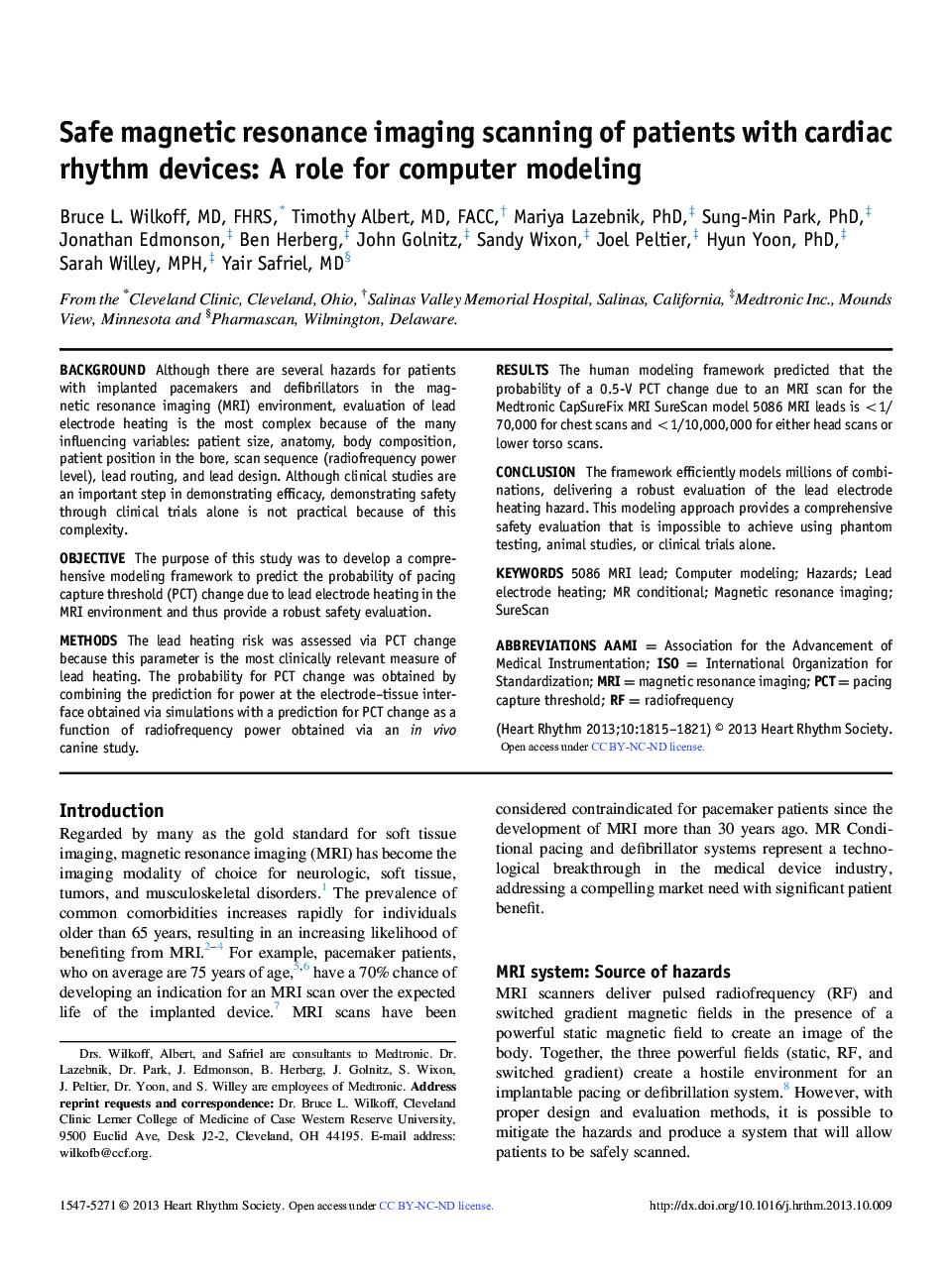| کد مقاله | کد نشریه | سال انتشار | مقاله انگلیسی | نسخه تمام متن |
|---|---|---|---|---|
| 5961110 | 1575751 | 2013 | 7 صفحه PDF | دانلود رایگان |
BackgroundAlthough there are several hazards for patients with implanted pacemakers and defibrillators in the magnetic resonance imaging (MRI) environment, evaluation of lead electrode heating is the most complex because of the many influencing variables: patient size, anatomy, body composition, patient position in the bore, scan sequence (radiofrequency power level), lead routing, and lead design. Although clinical studies are an important step in demonstrating efficacy, demonstrating safety through clinical trials alone is not practical because of this complexity.ObjectiveThe purpose of this study was to develop a comprehensive modeling framework to predict the probability of pacing capture threshold (PCT) change due to lead electrode heating in the MRI environment and thus provide a robust safety evaluation.MethodsThe lead heating risk was assessed via PCT change because this parameter is the most clinically relevant measure of lead heating. The probability for PCT change was obtained by combining the prediction for power at the electrode-tissue interface obtained via simulations with a prediction for PCT change as a function of radiofrequency power obtained via an in vivo canine study.ResultsThe human modeling framework predicted that the probability of a 0.5-V PCT change due to an MRI scan for the Medtronic CapSureFix MRI SureScan model 5086 MRI leads is <1/70,000 for chest scans and <1/10,000,000 for either head scans or lower torso scans.ConclusionThe framework efficiently models millions of combinations, delivering a robust evaluation of the lead electrode heating hazard. This modeling approach provides a comprehensive safety evaluation that is impossible to achieve using phantom testing, animal studies, or clinical trials alone.
Journal: Heart Rhythm - Volume 10, Issue 12, December 2013, Pages 1815-1821
